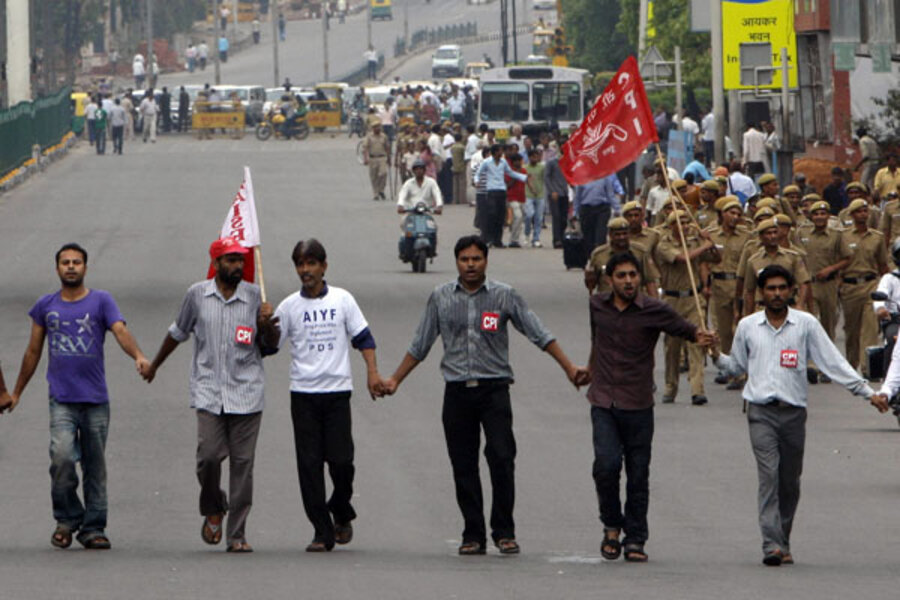Why India's fuel subsidies actually benefit the rich
Loading...
The unrest in India this week should serve as a potent reminder of the tendency of unnecessary and outdated subsidies to become entrenched in a society, as rent-seekers become increasingly accustomed to insulation from normal market forces, leaving others to pick up the bill.
Strikes, demonstrations, and fires disrupted daily life across the country as tens of thousands took to the streets to protest a decision by the Indian government to reduce costly fuel subsidies that had begun to seriously burden the energy-hungry nation’s budget. For years, the country had fixed below-market prices for fuel, mandating that all of its state-owned retailers sell gasoline, kerosene, and gas used for cooking at a discount. The recent decision permits the sale of gasoline at market prices, and, though the state has retained price controls for kerosene, cooking gas, and diesel, these subsidies will decrease.
The price of gasoline is expected to rise by less than eight percent, while kerosene, cooking gas, and diesel will rise by eleven, thirty-three, and five percent, respectively. The Financial Times reports that India spends £10.7 billion annually on subsidies for these products, a burden that the market-oriented reforms will reduce by more than £2.8 billion. These savings are not unimportant for the government, which has increased spending and borrowing to record amounts in recent years, and is trying to reduce its budget deficit of 6.6% of GDP.
Unions and members of the political opposition have attacked the decision as a cruel measure that will harm India’s poorest, as the subsidies have long been defended as necessary to provide access to vital fuels. Yet the reality of the subsidies’ effects could not be very different. The poor in India do not use considerable amounts of fuel, which is instead consumed by wealthier Indians who have been able to purchase appliances and automobiles as the country has grown. Whenever the market price or consumption of fuel increases, as both are likely to continue to do given the scale of economic growth in the region, the Indian government must divert more of its budget away from more critical activities to sustain fuel subsidies that primarily benefit the middle and upper classes.
Furthermore, the economic rent seeking behaviour that is incentivised by the current system encourages government corruption and the concordant diversion of subsidised petroleum, ensuring that much of it does not reach the poor. According to Dr. Bhamy Shenoy, an economist at the International Institute for Sustainable Development, only sixty percent of subsidised kerosene in India reaches its intended recipients.
The Indian government has more to do in the way of eliminating price-distorting subsidies and trade barriers, but its apparent willingness to resist opposition pressure in response to its most recent decision is an encouraging sign of the country’s slow march toward a more open market. The intensity of the opposition to the price hike is suggestive of the oft-observed difficulty of ending subsidies once those who benefit become accustomed to their free ride. As Dr. Shenoy writes: “Once the subsidy genie is out of the bottle, putting it back in is a difficult task indeed.”
Add/view comments on this post.
------------------------------
The Christian Science Monitor has assembled a diverse group of the best economy-related bloggers out there. Our guest bloggers are not employed or directed by the Monitor and the views expressed are the bloggers' own, as is responsibility for the content of their blogs. To contact us about a blogger, click here. To add or view a comment on a guest blog, please go to the blogger's own site by clicking on the link above.





